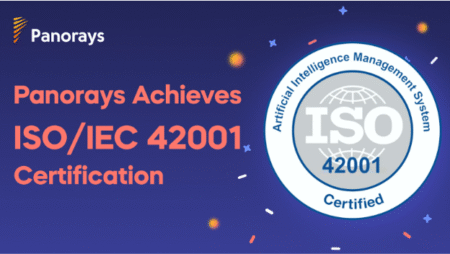In the bustling, borderless landscape of the global market, customer satisfaction is the cost of entry, but customer delight is the currency of exponential growth. A ‘satisfied’ customer is a passive one; they might return, but they won’t go out of their way to advocate for your brand. A ‘Raving Fan’, however, is an active promoter, a volunteer in your sales force, whose genuine enthusiasm is published for all the world to see on the most powerful public forum: Google.
Turning a casual customer into a zealous fan who leaves glowing, detailed Google reviews requires a dedicated, five-pillar strategy. This approach moves beyond simple request emails and embeds the philosophy of ‘delight’ into every layer of the customer experience, ensuring that when the request for feedback comes, the customer is not only willing but eager to sing your praises.
Pillar 1: Perfect the Foundational Experience (The ‘Wow’ Moment)
You cannot ask for a five-star review if you only deliver a three-star experience. The foundation of a raving fan strategy is the customer journey itself, which must be frictionless, consistent, and memorable.
A. Define Your “Non-Negotiable” Signature Service
Identify two or three things your business will do better than anyone else, every single time. This should be a specific, measurable commitment that elevates the standard experience.
-
Example: If you run an e-commerce brand, your non-negotiable might be “Same-day dispatch for all orders placed before 3 PM” or “A personalised, hand-written thank-you note in every box.” This consistency builds trust and gives customers something specific to praise in their reviews.
B. Eliminate Points of Friction
Friction is anything that makes the customer’s journey difficult or confusing. In the digital age, this often involves the mechanics of service:
-
Seamless Onboarding: Ensure your website’s navigation, checkout process, and contact methods are intuitive and fast. If a customer struggles, their entire experience is soured, making a positive review unlikely.
-
Proactive Communication: Use clear, automated updates for delivery, service status, or appointment changes. Eliminating the need for the customer to chase you is a massive stress reliever.
C. Empower Staff to Go Above and Beyond
Raving Fans are usually created by a person, not a system. Give your front-line employees the autonomy and budget to surprise and delight customers—a small, unprompted gesture that fixes an error or simply exceeds expectation. This is the moment a customer transitions from satisfied to advocate.
Pillar 2: Master the Art of the Frictionless Request
A customer who has had a “wow” experience still needs a prompt. The key is to make the act of leaving a review as effortless as possible, ensuring zero technical friction.
A. Timing is Everything (The Peak-End Rule)
Request a review at the peak of the customer’s satisfaction or immediately after the positive “end” of their interaction.
-
For products: Send the request 3-5 days after delivery, allowing time for the item to be used, not just received.
-
For services: Send the request immediately upon completion of the service appointment or resolution of a complex issue.
B. Create a Direct, One-Click Funnel
Never make a customer search for your business on Google. This is a common point of abandonment.
-
Use the Direct Link: Utilise your Google Business Profile Manager to generate your specific, unique review link.
-
QR Codes: Turn that link into a QR code for physical touchpoints (receipts, service vans, business cards). Scanning the code should take the customer directly to the rating page.
C. Personalise the Ask
Generic email templates feel automated and often get ignored. Use automation tools to pull in personalised data points.
-
Example Email: “Hi [Customer Name], we hope you’re loving your new [Product Name]! If we exceeded your expectations, we’d be grateful if you’d take 30 seconds to let us know on Google.”
Pillar 3: Convert Feedback into a Public Conversation
Once a review is received, the job is only halfway done. The public response stage is where you demonstrate commitment to service for all future prospects.
A. Respond to Every Review, Always
Responding is not about the reviewer; it’s about the next 100 people who read that thread. Your response confirms that your business is engaged, attentive, and cares about its community.
-
Positive Reviews: Thank them specifically, mention the item or service they praised, and invite them back. This shows you are reading and not using stock replies.
-
Example: “Thank you, Sarah! We are thrilled you enjoyed the quick turnaround on your kitchen design. We look forward to seeing the final results!”
-
-
Negative Reviews (Service Recovery): Respond swiftly, professionally, and publicly apologise for the issue. Immediately move the solution to a private channel (email/DM/phone). This turns a crisis into a public display of professional customer care.
-
Example: “We are genuinely sorry to hear about this, Mark. That certainly does not meet our standard. We have sent an email to your address to urgently resolve this matter directly.”
-
B. Showcase the Advocacy
Raving Fans love to see their support recognised. Feature positive reviews (with permission) across your other marketing channels:
-
Website: Create a dedicated ‘Customer Testimonials’ page.
-
Social Media: Turn glowing quotes into engaging graphics for Instagram or use them in Facebook Ad copy. This validates the fan and encourages others to participate.
Pillar 4: The Strategic Use of Review Data (Free Consulting)
Raving Fans are not only your best salespeople, but they are also your best, unpaid consultants. Their reviews contain a treasure trove of operational data.
A. Thematic Analysis
Systematically categorise all reviews (positive and negative) into key themes such as: “Speed,” “Staff Politeness,” “Product Durability,” or “Communication Clarity.”
-
If your reviews consistently praise the “knowledgeable staff” but critique “slow delivery,” you know precisely where to allocate resources: invest in better logistics, not more sales training.
B. Product and Service Naming
Pay attention to the specific words customers use when they love a product. If a feature you call “The Advanced Filter” is consistently referred to as “The Magic Dust Remover” by fans, adopt that language in your marketing—it’s more authentic and relatable.
Practical Financial Tip: Leveraging this free review data for business intelligence is a highly cost-effective measure. Instead of spending thousands on broad market surveys or external consultants, you are directing your investment toward fixing the highest-frequency customer-reported issues, leading to a much higher return on investment and a guaranteed stream of future positive feedback.
Pillar 5: Cultivate a Community of Advocates
The ultimate goal is to create a culture where leaving a Google review feels like a natural act of loyalty, not a chore.
-
VIP Programmes: Identify your most loyal customers (those who have bought often or left multiple five-star reviews) and offer them exclusive perks: early access to new products, a special discount tier, or VIP events.
-
The Power of the Unexpected: Occasionally send a small, unprompted gift or handwritten card to customers who have previously left a rave review. This unexpected gesture cements their status as a fan, ensuring they will likely repeat their public advocacy.
By committing to this holistic, fan-centric approach, your brand ensures that the answer to how to consistently Get more google business reviews is found in the quality of your service, the seamlessness of your requests, and the sincerity of your public engagement. Your customers will move beyond satisfaction, becoming dedicated, enthusiastic advocates who willingly and publicly champion your brand on the world’s most trusted search platform.
















